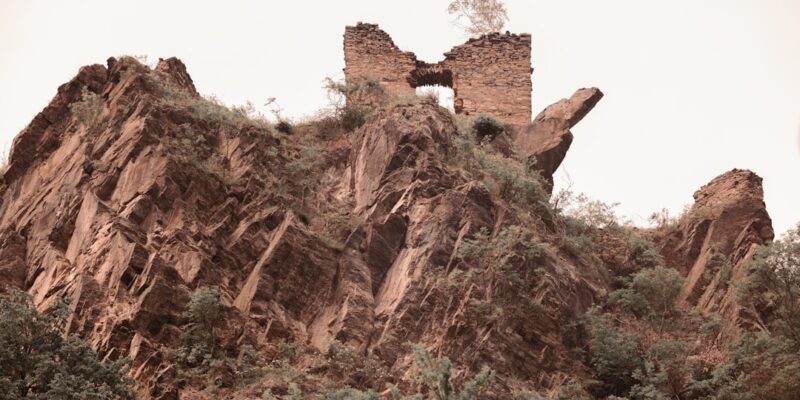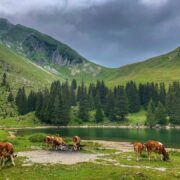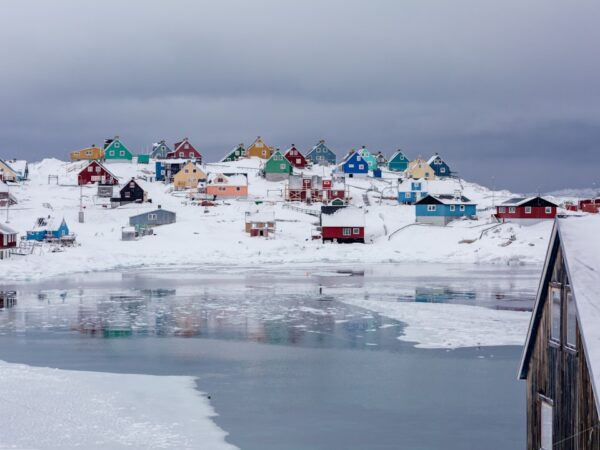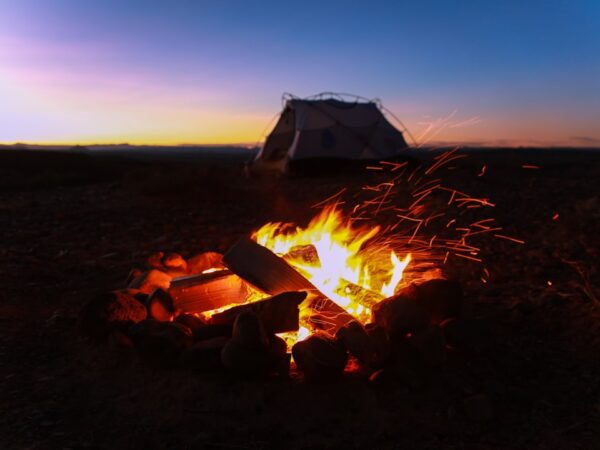
Discovering Machu Picchu: Trekking the Inca Trail
Machu Picchu and the Inca Trail are two iconic destinations in Peru that attract thousands of tourists each year. Machu Picchu, a 15th-century Inca citadel, is located high in the Andes Mountains and is considered one of the New Seven Wonders of the World. The Inca Trail is a famous trekking route that leads visitors to Machu Picchu, offering breathtaking views and a unique experience.
Machu Picchu holds great historical and cultural significance for Peru. It was built by the Incas in the 15th century and served as a royal estate or sacred religious site. However, it was abandoned and forgotten for centuries until it was rediscovered by American explorer Hiram Bingham in 1911. Since then, it has become a symbol of Inca civilization and an important archaeological site.
The Inca Trail, on the other hand, is an ancient pathway that was used by the Incas to reach Machu Picchu. It stretches for about 26 miles (42 kilometers) through diverse landscapes, including mountains, cloud forests, and Inca ruins. The trail offers hikers a chance to immerse themselves in nature and experience the rich history of the region.
Key Takeaways
- Machu Picchu is a world-renowned archaeological site located in Peru.
- Preparing for the Inca Trail trek involves physical training, packing the right gear, and acclimatizing to the altitude.
- The Inca Trail offers stunning views of the Andes Mountains and passes through ancient Incan ruins.
- Machu Picchu was built by the Inca Empire in the 15th century and was abandoned during the Spanish conquest.
- The best time to visit Machu Picchu is during the dry season from May to September.
Preparing for your Inca Trail trek
Before embarking on the Inca Trail trek, it is important to prepare yourself physically and mentally. The trek can be challenging, with steep ascents and descents, high altitudes, and unpredictable weather conditions. It is recommended to engage in regular physical exercise leading up to your trip to build stamina and endurance.
In terms of gear and equipment, it is essential to have proper hiking boots, comfortable clothing, a good backpack, a sleeping bag suitable for cold temperatures, a headlamp, sunscreen, insect repellent, and a first aid kit. It is also advisable to bring a refillable water bottle and water purification tablets, as clean drinking water may not always be readily available along the trail.
Permits are required to hike the Inca Trail, and they are limited to 500 people per day, including guides and porters. It is advisable to book your trek well in advance, especially during the peak tourist season from May to September. Additionally, there are regulations in place to protect the environment and preserve the integrity of the trail. These include restrictions on littering, camping in designated areas, and respecting the local communities and their traditions.
What to expect on the Inca Trail
The Inca Trail is a four-day trek that takes hikers through stunning landscapes and ancient ruins. The route starts at Kilometer 82, near the town of Ollantaytambo, and ends at Machu Picchu. Along the way, trekkers will encounter challenging uphill climbs, steep descents, and uneven terrain.
The difficulty level of the Inca Trail can vary depending on your fitness level and acclimatization to the high altitude. It is important to take it slow and listen to your body to avoid altitude sickness. The highest point of the trek is Dead Woman’s Pass at an elevation of 13,828 feet (4,215 meters), which can be physically demanding for some hikers.
Despite the challenges, the Inca Trail offers many highlights and landmarks that make it a memorable experience. Along the way, trekkers will pass through several Inca ruins, including Llactapata, Runkurakay, Sayacmarca, and Wiñay Wayna. These ruins provide a glimpse into the ancient Inca civilization and offer stunning views of the surrounding mountains and valleys.
The history and significance of Machu Picchu
| Year Built | Location | Altitude | Discovery | Significance |
|---|---|---|---|---|
| 1450 AD | Peru | 2,430 meters (7,970 ft) | 1911 by Hiram Bingham | One of the most important archaeological sites in the world and a symbol of the Inca Empire |
Machu Picchu was built by the Incas in the 15th century during the height of their empire. It is believed to have served as a royal estate for the Inca emperor Pachacuti or as a sacred religious site. The construction of Machu Picchu is a testament to the advanced engineering and architectural skills of the Incas, as the site was built using massive stone blocks without the use of mortar.
There are several theories about the purpose and function of Machu Picchu. Some believe it was a retreat for the Inca elite, while others think it was a pilgrimage site or an astronomical observatory. The exact reason for its construction remains a mystery, adding to its allure and intrigue.
Machu Picchu was abandoned and forgotten for centuries after the Spanish conquest of Peru. It was only rediscovered in 1911 by Hiram Bingham, an American explorer. Since then, efforts have been made to preserve and protect the site. Machu Picchu was declared a UNESCO World Heritage Site in 1983 and has become one of the most visited tourist destinations in South America.
The best time to visit Machu Picchu
The weather and climate in Machu Picchu can vary depending on the time of year. The peak tourist season is from May to September when the weather is generally dry and sunny. However, this is also when the trail and the ruins can be crowded with tourists.
The rainy season in Machu Picchu is from November to March, with February being the wettest month. During this time, there is a higher chance of rain and fog, which can obstruct views of the ruins. However, the landscape is lush and green, and there are fewer tourists on the trail.
The shoulder seasons of April and October offer a good balance between good weather and fewer crowds. The weather is generally mild, with less rain and cooler temperatures. It is important to note that Machu Picchu can be visited year-round, but it is advisable to check the weather forecast and plan accordingly.
Exploring the ruins of Machu Picchu
When visiting Machu Picchu, there are two main options for exploring the ruins: guided tours and self-guided visits. Guided tours are led by knowledgeable guides who provide insights into the history and significance of the site. They can help navigate the complex layout of the ruins and point out important landmarks and features.
Self-guided visits allow visitors to explore at their own pace and take in the beauty of the site. There are informational signs throughout the ruins that provide details about the different structures and their functions. It is advisable to do some research beforehand or bring a guidebook to enhance your understanding of the site.
Some must-see attractions in Machu Picchu include the Intihuatana Stone, which is believed to have been used as a solar clock or calendar, the Temple of the Sun, which was dedicated to the Inca sun god Inti, and the Temple of the Three Windows, which offers panoramic views of the surrounding mountains.
The flora and fauna of the Inca Trail
The Inca Trail is not only known for its historical significance but also for its rich biodiversity. The trail passes through different ecosystems, including high-altitude grasslands, cloud forests, and subtropical jungles. This diversity of habitats supports a wide range of plant and animal species.
The Andean region is home to unique plant species that have adapted to the harsh conditions of high altitudes. These include orchids, bromeliads, and mosses. The cloud forests along the trail are also home to a variety of tree species, including the iconic Polylepis or “paper tree.”
In terms of wildlife, trekkers may encounter Andean spectacled bears, deer, foxes, and a variety of bird species such as hummingbirds and Andean condors. It is important to respect the wildlife and observe from a distance to minimize disturbance to their natural habitats.
Efforts are being made to protect the environment along the Inca Trail and promote sustainable tourism practices. This includes waste management, reforestation projects, and educational programs for local communities and visitors.
Meeting the local communities along the Inca Trail
The Inca Trail passes through several indigenous communities that have preserved their traditions and way of life for centuries. These communities offer a unique opportunity for cultural exchange and learning.
One such community is the Quechua people, who are descendants of the Incas. They have a deep connection to the land and maintain traditional agricultural practices. Visitors can learn about their farming techniques, textile weaving, and traditional ceremonies.
It is important to approach these communities with respect and sensitivity. Engaging in responsible tourism practices, such as supporting local businesses and respecting their customs and traditions, can help foster positive relationships and contribute to the sustainable development of these communities.
Tips for a successful Inca Trail trek
To ensure a successful Inca Trail trek, it is important to prepare both physically and mentally. Training for the trek should include cardiovascular exercises, such as hiking or running, as well as strength training to build endurance. It is also advisable to acclimatize to the high altitude by spending a few days in Cusco or other high-altitude destinations before starting the trek.
Health and safety precautions should also be taken into consideration. It is important to stay hydrated, wear sunscreen and insect repellent, and protect yourself from the sun by wearing a hat and sunglasses. It is also advisable to bring a first aid kit with basic supplies such as bandages, pain relievers, and altitude sickness medication.
Sustainability and ethical considerations are also important when trekking the Inca Trail. It is important to follow Leave No Trace principles by packing out all trash and minimizing your impact on the environment. Supporting local businesses and porters by hiring them for the trek is also a responsible choice.
The spiritual and cultural experience of trekking the Inca Trail
Trekking the Inca Trail is not just a physical challenge but also a spiritual and cultural experience. The trail offers a chance to disconnect from the modern world and connect with nature and history.
The breathtaking landscapes, from snow-capped mountains to lush valleys, provide a sense of awe and wonder. The ancient ruins along the trail offer glimpses into the past and allow trekkers to imagine what life was like for the Incas.
Trekking the Inca Trail also provides an opportunity for personal growth and reflection. The physical challenges of the trek can push you out of your comfort zone and test your limits. It is a chance to overcome obstacles, build resilience, and gain a sense of accomplishment.
Immersing yourself in Peruvian culture and spirituality is another highlight of trekking the Inca Trail. Meeting local communities, participating in traditional ceremonies, and learning about their way of life can be a transformative experience. It allows for a deeper understanding and appreciation of the rich cultural heritage of Peru.
Trekking the Inca Trail and visiting Machu Picchu is an unforgettable experience that combines history, nature, and culture. The journey to Machu Picchu offers breathtaking views, physical challenges, and opportunities for personal growth. Exploring the ruins of Machu Picchu provides insights into the ancient Inca civilization and their advanced engineering skills.
Visiting Machu Picchu requires careful planning, including physical preparation, obtaining permits, and considering the best time to visit. It is important to approach the trek with respect for the environment, local communities, and their traditions.
Trekking the Inca Trail is not just about reaching Machu Picchu; it is about immersing yourself in Peruvian culture, connecting with nature, and experiencing personal growth. It is an opportunity to create lasting memories and gain a deeper appreciation for the wonders of the world. So, start planning your trip to Machu Picchu and embark on a journey of a lifetime.
FAQs
What is the Inca Trail?
The Inca Trail is a 26-mile trek through the Andes Mountains in Peru that leads to the ancient Incan city of Machu Picchu.
How long does it take to hike the Inca Trail?
The Inca Trail typically takes four days to complete, with each day consisting of approximately six to eight hours of hiking.
Do I need a permit to hike the Inca Trail?
Yes, a permit is required to hike the Inca Trail. The Peruvian government limits the number of hikers on the trail to 500 per day, including guides and porters.
When is the best time to hike the Inca Trail?
The best time to hike the Inca Trail is during the dry season, which runs from May to September. The trail is closed in February for maintenance.
What is the altitude of the Inca Trail?
The highest point on the Inca Trail is Dead Woman’s Pass, which sits at an altitude of 13,828 feet (4,215 meters).
Do I need to be in good physical shape to hike the Inca Trail?
Yes, hiking the Inca Trail requires a moderate level of physical fitness. Hikers should be able to walk for several hours at a time and climb steep inclines.
What should I pack for the Inca Trail?
Hikers should pack comfortable hiking shoes, warm clothing for the cold nights, a rain jacket, a hat, sunscreen, insect repellent, a water bottle, and snacks.
Is it safe to hike the Inca Trail?
Yes, hiking the Inca Trail is generally safe. However, hikers should be aware of the risks associated with high altitude, such as altitude sickness, and take necessary precautions. It is also important to hike with a licensed guide.













